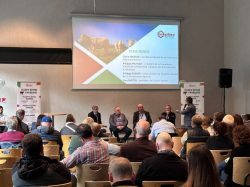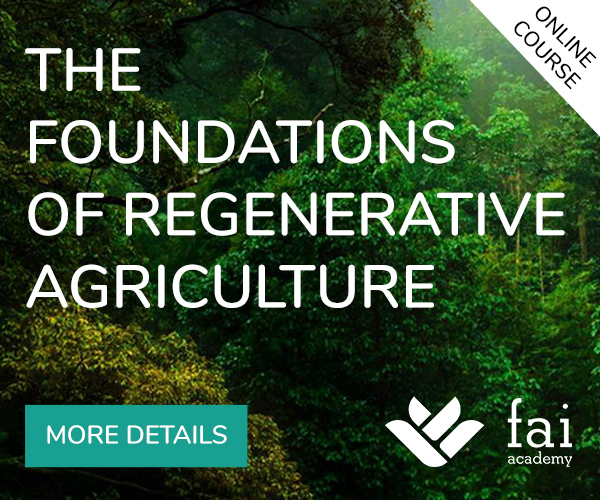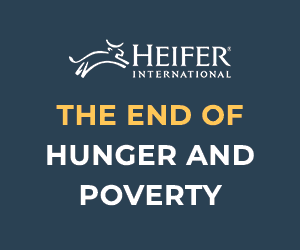



Highlights from France's INTERBEV bovine conference at the Livestock Summit 2024
The conference focused on three key issues
The conference in conjunction with the Livestock Summit on October 1-4, 2024, INTERBEV, the Livestock and Meat Interprofessional, accompanied by its 5 Regional Committees and Normabev. Its bovine conference focused on "Promoting our sustainable production of live cattle in France, the EU and for export: what are the prospects, what are the strategies?”
French cattle breeding is an example of sustainable and responsible production recognized throughout the world. Based on an autonomous and grass-based model, it meets high standards in terms of health, the environment and animal welfare. These assets must be promoted to guarantee the renewal of our herd and our ability to meet the demand for live cattle, in France and internationally.
The INTERBEV Bovine conference at the Livestock Summit is an opportunity to revisit these key issues:
- What levers should operators in the sector activate to stop decapitalization and ensure France’s food sovereignty?
- Is the relocation of fattening of some of the animals currently exported a sustainable trend?
- Under what conditions will a vibrant and valuable export market be maintained, in a changing economic and regulatory context (health, animal welfare)?
More than ever, the sector needs visibility and clear rules to create value while perpetuating the export of quality animals to its customers.
One year after the launch of the government plan for the reconquest and sovereignty of livestock farming, several action priorities have been defined to strengthen the sustainable performance of the beef sector.
Preserving French beef production requires strengthening contractualization
The Livestock and Beef sector is facing a major challenge: the decapitalization of its livestock and the reduction in the number of breeders that goes with it, represents a direct threat to France's food sovereignty and meat self-sufficiency.
Over the past 7 years, the French cattle herd has lost 940,000 suckler and dairy cows, a drop of 12%. In addition, even though consumption remains almost stable, production could fall by 19% by 2030, or even 30% by 20351.
To stop this decapitalization, the sector is banking in particular on the development of contractualization between breeders and buyers. This contractualization makes it possible to secure a supply of quality cattle and beef from operators in the sector and offers better economic security to breeders, thus allowing them to maintain and preserve their herd.
By stabilizing prices and taking into account production costs, contractualization also encourages the relocation of part of the fattening of calves and young cattle in France, thus limiting dependence on imports. It therefore contributes to preserving French beef production and meeting the expectations of customers and consumers.
Valuable outlets for both live and meat: an essential lever for the sustainability of the sector
To guarantee the sustainability of the French beef sector, the diversification of outlets is essential, both on the national market and for export.
The export of live animals is a strategic outlet for many operators (1.47 million animals exported). It helps preserve the economic viability of livestock farms, while meeting the growing needs of our historic trading partners in Italy, Spain, and other European countries, where domestic production is insufficient. These markets favor cattle born in France, recognized for their quality and traceability.
To sustain this outlet, it is essential to strengthen the link with our trading partners. Fair remuneration for French production is crucial to maintain lasting relationships with our customers.
At the same time, the export of meat from animals fattened in France plays an equally decisive role for the sector. Exports represent 16% of the volume slaughtered in France, thus supplementing the national market.
The valorization of French cattle, whether they are fattened on our territory or with our European neighbors, is a major challenge for the sustainability of the sector. In a changing economic and regulatory context (health, animal welfare), stakeholders need visibility and clear rules to create value while perpetuating the export of quality animals and meat to their customers.
French grass-based livestock farming: a guarantee of quality to promote the cattle sector
Grass-based livestock farming is an essential asset for promoting and valuing the French model both nationally and internationally. Based on sustainable production, it is based on high requirements in terms of animal welfare, respect for the environment and health safety. These criteria provide lend the sector additional credibility, enabling it to meet growing societal expectations and the demands of international markets.
Traceability, the pillar of this model, guarantees at every stage that health and environmental standards are scrupulously respected. It is the basis of consumer and business partner confidence in French meat. French livestock farming is one of the most virtuous models in the world, fully valuing local fodder resources. It plays a key role in the ecological transition through the maintenance of hedgerows and the preservation of meadows.
Conference speakers:
- Emmanuel BERNARD – President of INTERBEV Bovins
- Boris DUFLOT – Director of the Economics Department of the Institut de l’Elevage
- Cédric MANDIN – Secretary General of the Fédération Nationale Bovine
Some figures:
- 1.47 million live cattle exported (to 52 countries)
- 214.4 thousand tonnes of carcass equivalent of fresh and frozen meat (to 35 countries)
- Historical markets: Italy / Germany / Greece
- Eemerging markets: Japan / China / South Korea
1 Source: Ceresco







